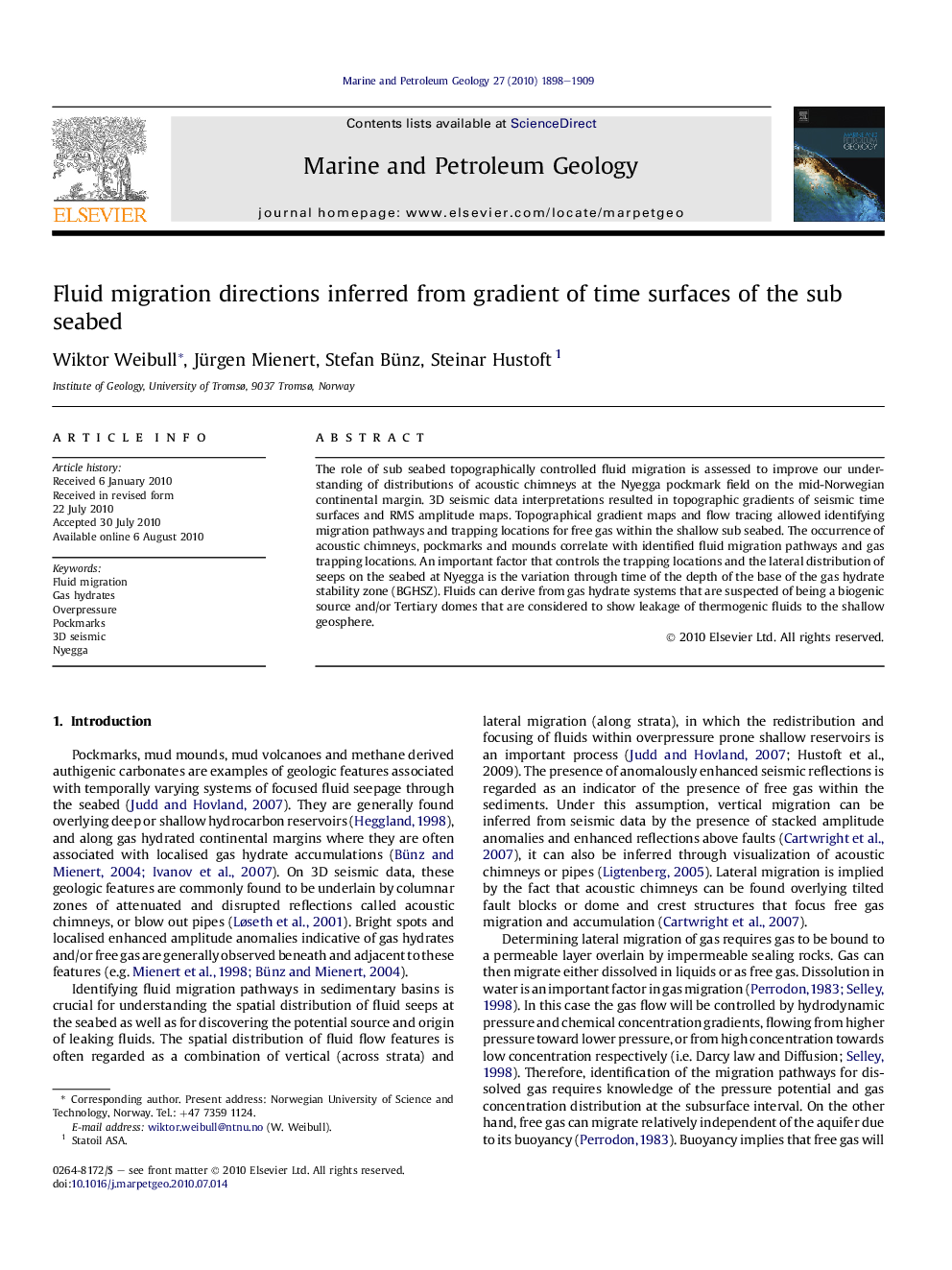| Article ID | Journal | Published Year | Pages | File Type |
|---|---|---|---|---|
| 4696187 | Marine and Petroleum Geology | 2010 | 12 Pages |
The role of sub seabed topographically controlled fluid migration is assessed to improve our understanding of distributions of acoustic chimneys at the Nyegga pockmark field on the mid-Norwegian continental margin. 3D seismic data interpretations resulted in topographic gradients of seismic time surfaces and RMS amplitude maps. Topographical gradient maps and flow tracing allowed identifying migration pathways and trapping locations for free gas within the shallow sub seabed. The occurrence of acoustic chimneys, pockmarks and mounds correlate with identified fluid migration pathways and gas trapping locations. An important factor that controls the trapping locations and the lateral distribution of seeps on the seabed at Nyegga is the variation through time of the depth of the base of the gas hydrate stability zone (BGHSZ). Fluids can derive from gas hydrate systems that are suspected of being a biogenic source and/or Tertiary domes that are considered to show leakage of thermogenic fluids to the shallow geosphere.
